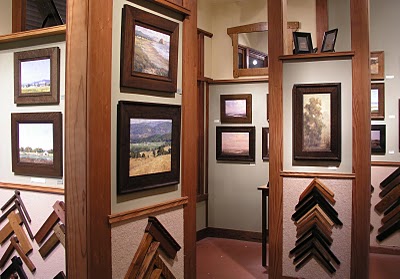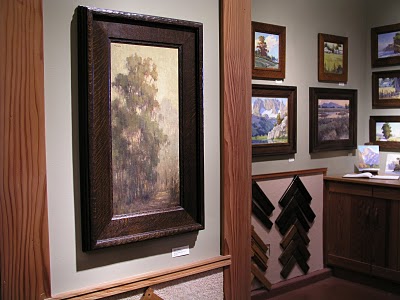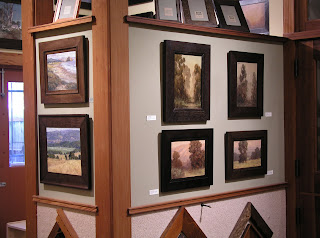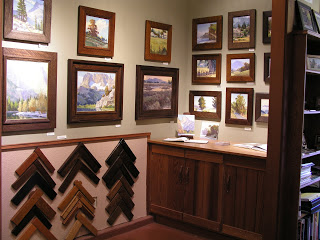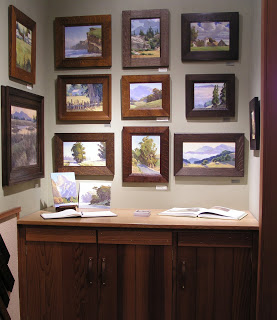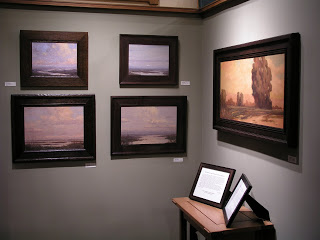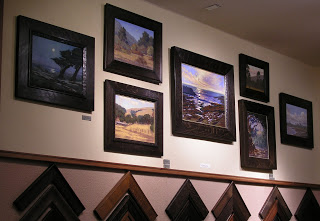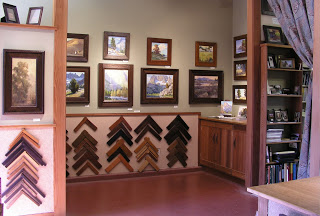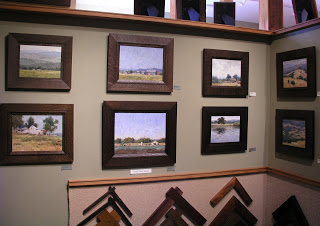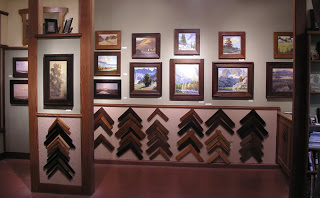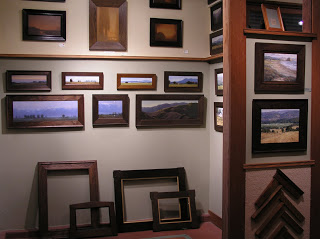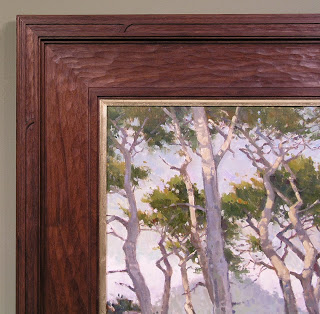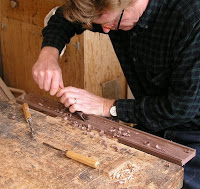We recently framed this Paul Kratter painting for a couple in Washington State, and I wanted to share one aspect in particular that we’re emphasizing more and more. It’s what Walter Crane, the first president of the Arts and Crafts Exhibition Society, called “mural feeling”—the effect of an easel painting framed and hung to feel like a part of the wall. 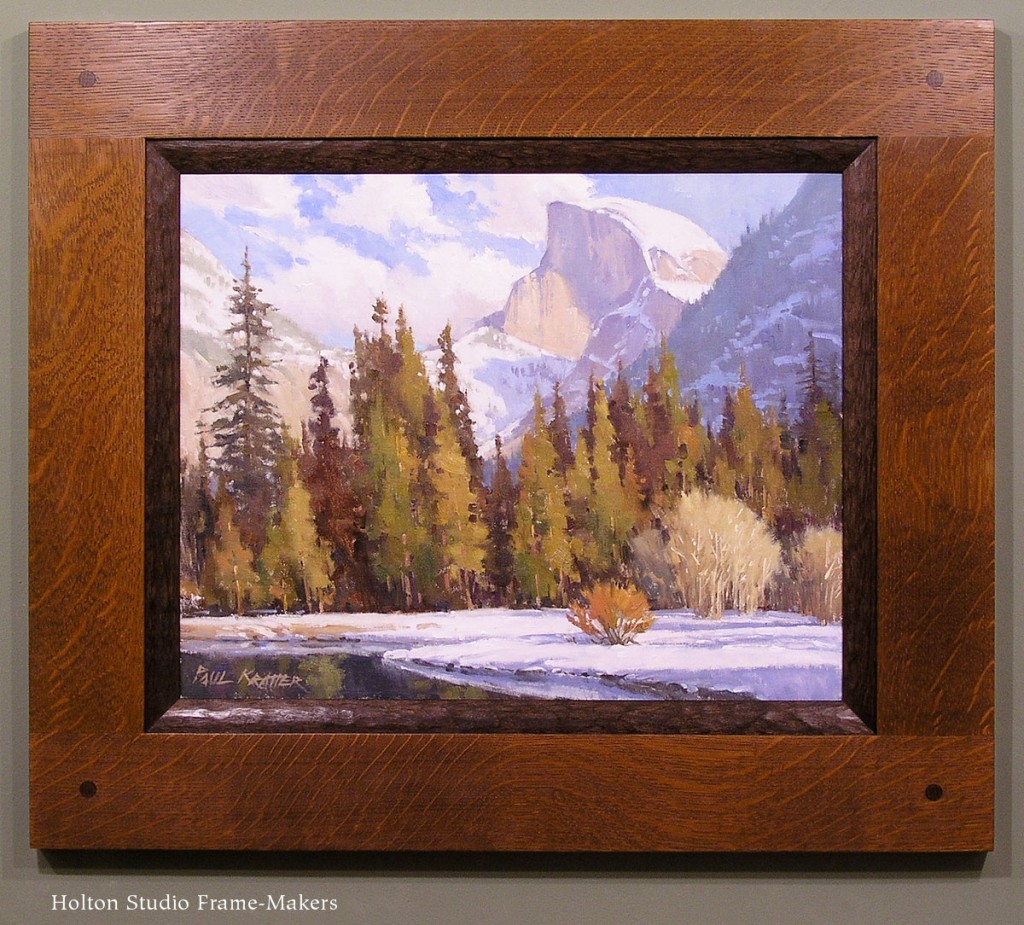
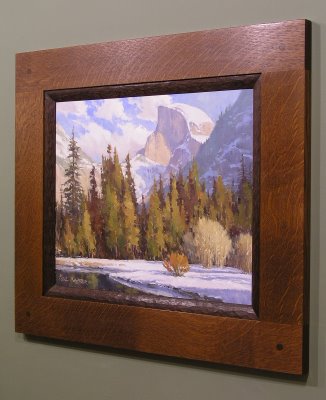 As Crane wrote, “The easel picture, properly considered and placed in its right relationship to its surroundings, by judicious treatment and hanging, and above all by a certain mural feeling, may be the acme of decoration. Its relation to a scheme of decoration may be like that of a jewel in a dress.” Two keys to achieving this effect are demonstrated by this piece: first, and more obviously, the very architectural feeling of the mortise-and-tenon frame; and second, the hanging system which allows the frame to hang right up against the wall with no gap, and especially importantly, without leaning forward and down the way pictures usually do when hung with a wire. The way we do this is to cut recesses on the back (the “reverse,” in framer’s parlance) of the frame and attach D-rings in the recesses. There’s no wire; the picture hooks are carefully located on the wall so the D-rings hang directly off the hooks. With the D-rings and the picture hooks both in the recesses there’s nothing to push the picture and frame away from the wall.
As Crane wrote, “The easel picture, properly considered and placed in its right relationship to its surroundings, by judicious treatment and hanging, and above all by a certain mural feeling, may be the acme of decoration. Its relation to a scheme of decoration may be like that of a jewel in a dress.” Two keys to achieving this effect are demonstrated by this piece: first, and more obviously, the very architectural feeling of the mortise-and-tenon frame; and second, the hanging system which allows the frame to hang right up against the wall with no gap, and especially importantly, without leaning forward and down the way pictures usually do when hung with a wire. The way we do this is to cut recesses on the back (the “reverse,” in framer’s parlance) of the frame and attach D-rings in the recesses. There’s no wire; the picture hooks are carefully located on the wall so the D-rings hang directly off the hooks. With the D-rings and the picture hooks both in the recesses there’s nothing to push the picture and frame away from the wall.
What’s so important about this is the effect of unity and the aim of restoring the primal unity of all the arts, but in particular the most divided arts historically speaking, which are painting and architecture.
One other thing about this frame that I particularly like is the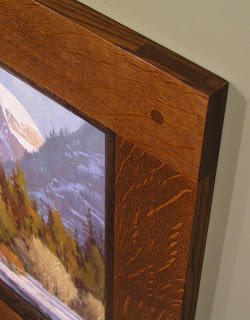 flush through tenons, shown here:
flush through tenons, shown here:
